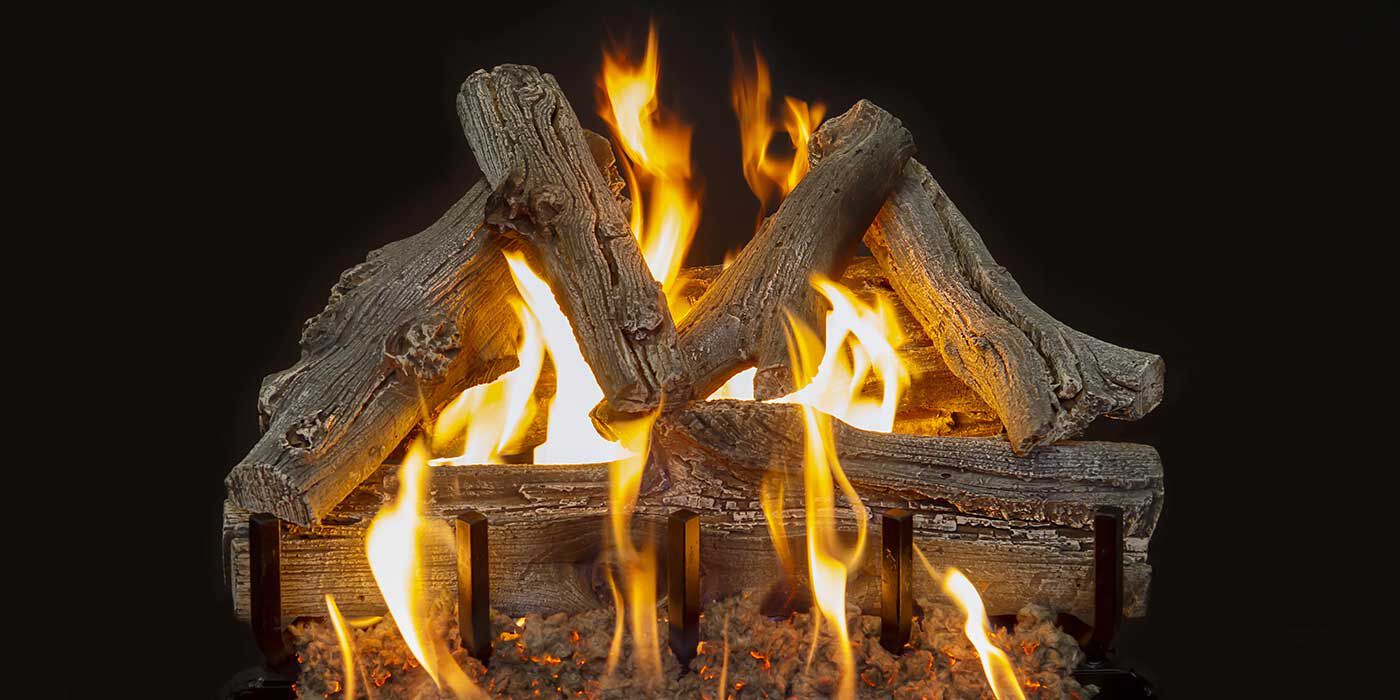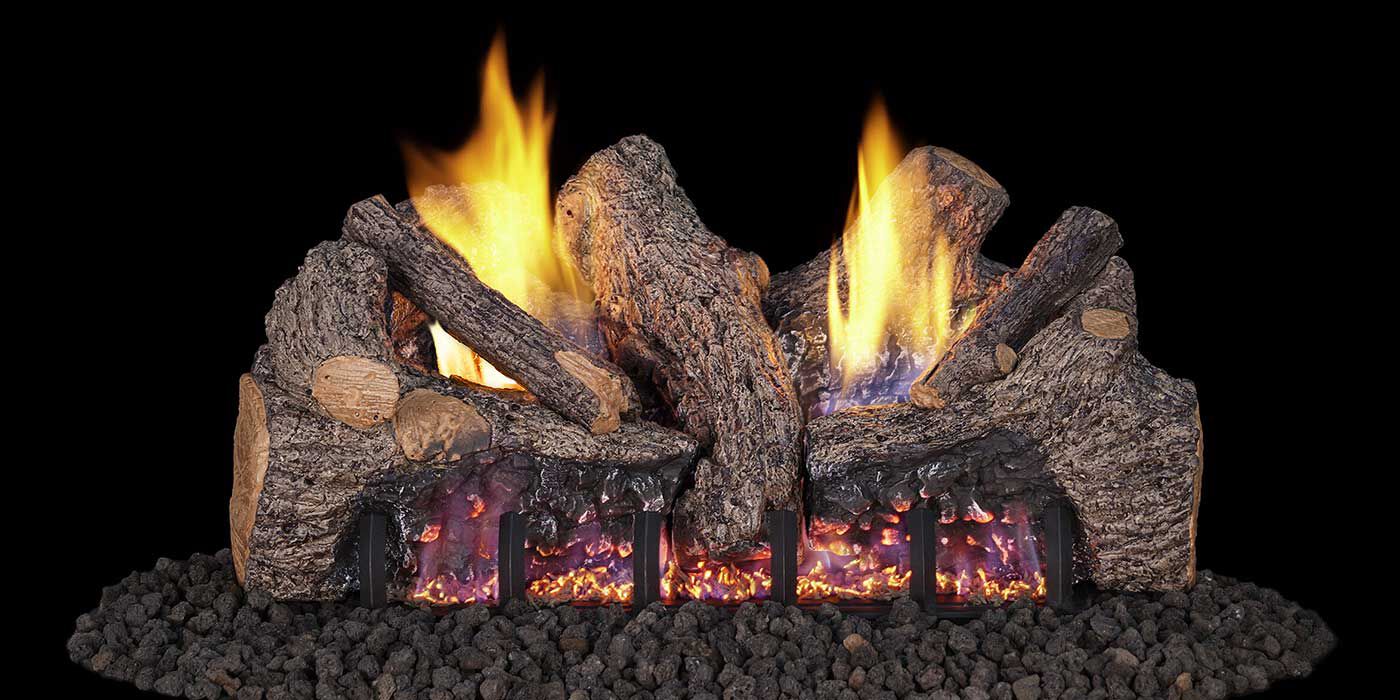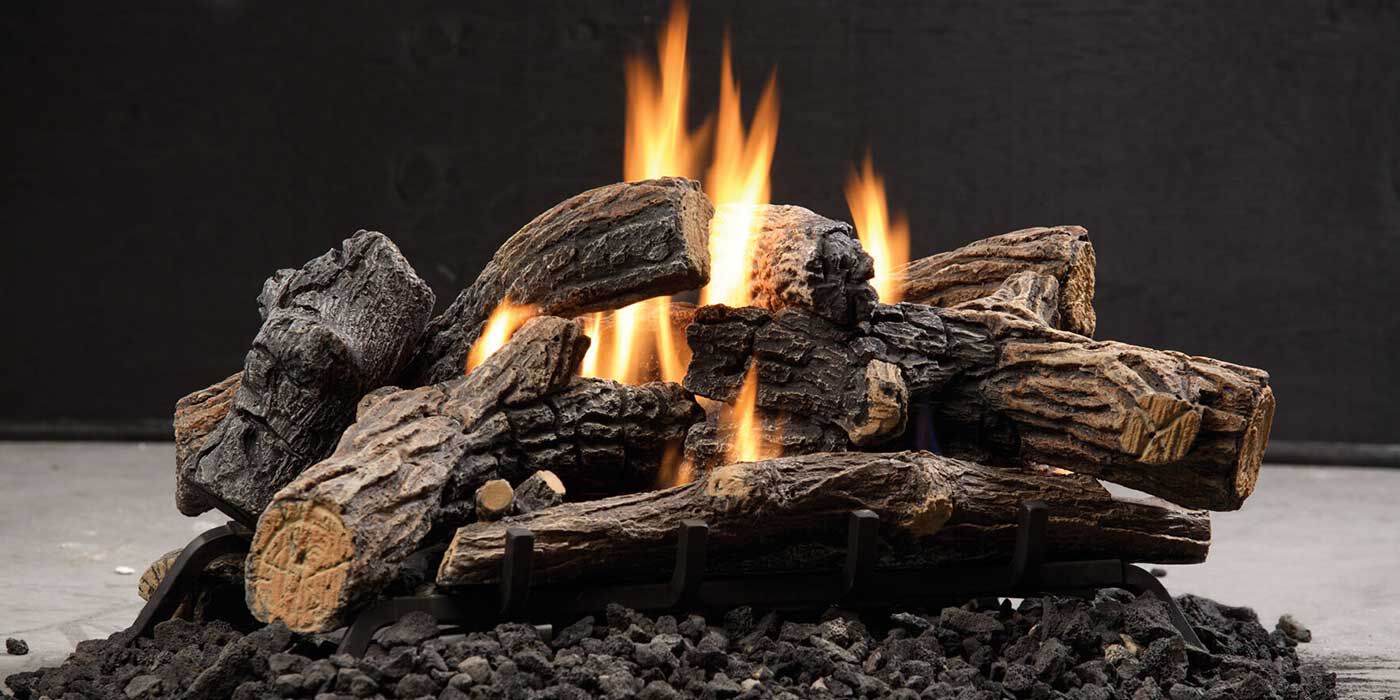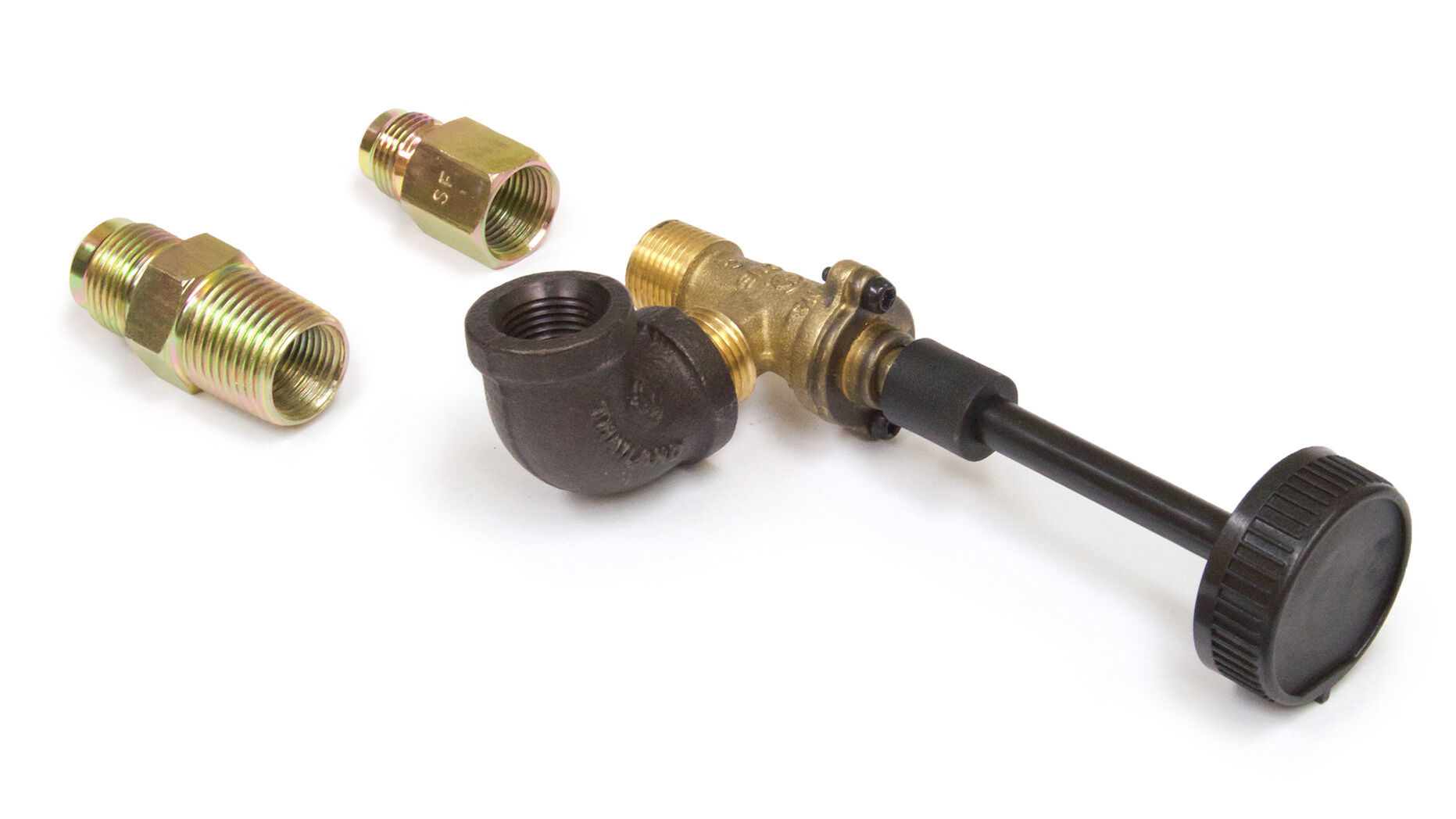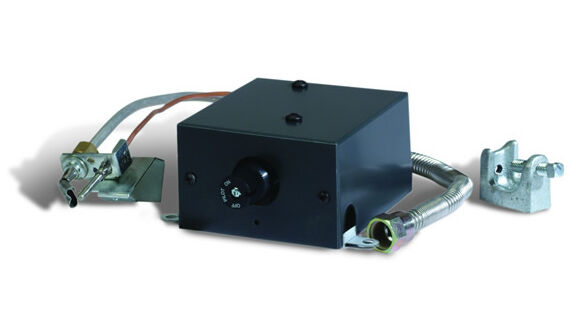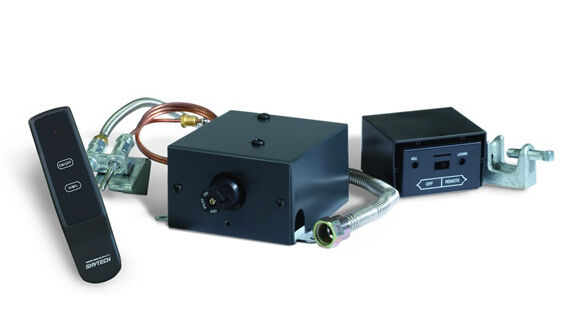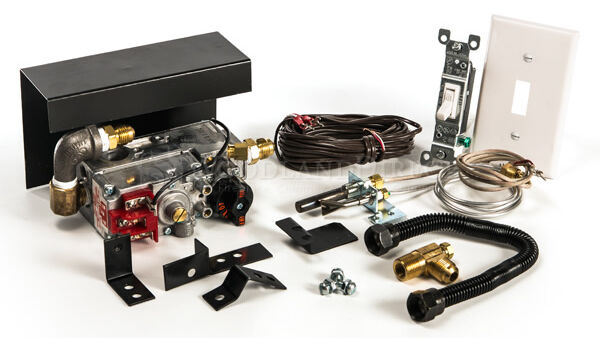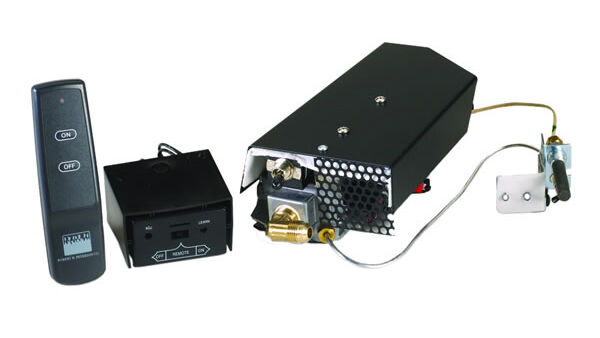By: Tom Regis, NFI Certified Master Hearth Professional
Last Updated: September 25, 2025
Looking to upgrade your fireplace and enjoy cozy, hassle-free flames? Gas log sets are a smart, safe, and low-maintenance alternative to traditional wood fireplaces. They give you the authentic look and feel of a real wood fire with the convenience and efficiency that comes with gas fireplaces.
In this guide, we’ll explore the main types of gas logs, the materials used, control systems, fuel sources, sizing tips, and key considerations to help you choose the right gas logs for your fireplace.
Gas Log Styles
When it comes to narrowing down the best gas logs for your fireplace, the first step is understanding the main types available.
Vented Gas Logs
Vented gas log sets are the best options for existing wood burning fireplaces with working chimneys. They're the most authentic-looking replacement for real wood logs with tall, golden flames and realistic log detailing.
How They Work:
- Requires the chimney damper to remain open to prevent the buildup of carbon monoxide.
- Heat escapes through the chimney, making them a less efficient heat source than Ventless gas logs.
- Burners come either standard (assembled on-site) or ANSI-certified (pre-assembled and tested).
Pros:
- Authentic, lifelike flames that mimic burning wood
- Detailed bark and log designs
- No BTU restrictions
- ANSI-certified and standard burner options
- Expansive ember beds for realism
- Logs can be rearranged
Cons:
- Less efficient at heating than Ventless logs
- Requires venting and damper clamp
- Significant heat loss through chimney
Pro Tip:
Keep in mind, certain cities require an ANSI-certified burner. Check your area's fire codes to make sure your burner complies.
Our Most Popular Vented Gas Log Sets
Ventless (Vent-Free) Gas Logs
The term “Ventless” or “Vent-Free” comes from the fact that Ventless gas log sets don’t require a chimney or venting to operate. These clean-burning log sets achieve smokeless flames and burn at nearly 100% efficiency.
How They Work:
- Produce minimal byproducts—mostly water vapor and carbon dioxide
- Flames are smaller and often blue, less dramatic than vented logs
- Must follow a specific log stacking pattern to prevent unsafe gas buildup
- Equipped with an Oxygen Depletion Sensor (ODS) for safety
Pros:
- Extremely efficient (99.9%)
- More heat delivered to your room
- Less gas consumption
- No venting system required
- Factory-assembled and ANSI-certified for safety
Cons:
- Smaller, less realistic flames
- Limited BTU output (6,000–40,000 BTUs depending on location)
- Logs must follow precise arrangement for safety
- Can slightly increase indoor humidity
- May intensify odors in the home
- Restricted installation in some states (check building codes)
Our Most Popular Ventless Gas Log Sets
Gas Log Materials
Gas logs are typically cast from real tree samples or crafted from highly detailed molds.
Most gas logs are ceramic fiber or a refractory ceramic mixture that can withstand extreme temperatures. Some logs even have steel reinforcement rods added to the middle for extra strength.
- Refractory Ceramic: Highly realistic, retains shape and color, durable over time
- Ceramic Fiber: Excellent heat retention; radiates warmth even after the fire is off
Gas Log Control Options
Match-Lit
Match-lit ignitions are simple, budget-friendly, and require manual lighting. The system doesn't include a pilot or valve assembly. You'll simply place a match or lighter near the burner and turn on your gas supply with the included gas key valve.
Match-lit systems are only available with Vented gas log sets fueled by Natural Gas.
Manual Safety Pilot
Manual Safety Pilots, or Safety Pilot Kits (SPKs) have flame-sensing thermocouples. Instead of lighting your log set with a match, you'll turn on your gas supply, push a knob on the gas valve, and turn it to the "On" position.
Once your log set ignites, you can release the knob and the pilot stays lit. If the flame goes out, the system automatically shuts off your gas supply.
Millivolt Valve
Millivolt gas valves are also similar to SKUs. They use a thermopile to generate a larger millivolt current. This allows you to connect a remote control, wall switch, timer, or thermostat to your gas log set.
Millivolt systems don't require external power, because they operate solely off the pilot light, which stays lit.
Electronic Valve
Electronic ignition systems are the safest and most convenient way to operate your log set. Some require a source of power, but most are battery-operated. With an electronic gas valve, the pilot will not stay lit.
You can turn the pilot light on and off and adjust the flame height on your gas log set using a remote control, a wall switch, or a switch on the gas valve.
Gas Log Set Components
Every gas log set includes:
- Gas valve and burner system
- Pilot assembly
- Steel grate
- Logs (ceramic fiber or refractory)
- Glowing embers
- Damper clamp (for vented sets)
- Assembly accessories
Gas Log Sizing
Manufacturers determine gas log sizing. Be sure to check the sizing requirements and clearance recommendations before purchasing a log set.
Improperly sized gas logs can overheat your firebox and the gas valves, which can cause permanent damage to your log set, fireplace, and home.
Steps to Measure Your Fireplace:
- Measure the front width of your firebox.
- Measure the rear width.
- Measure depth and height.
- Use these measurements to select the right gas logs for your fireplace.
Key Considerations & Building Codes
Before installing a gas log set, consider:
- Type of gas log (vented or ventless)
- Fuel type (natural gas vs. liquid propane)
- Burner system type and control system
- Venting requirements and chimney condition
- Local building codes and fire regulations
Pro Tip:
Some states restrict ventless gas appliances indoors. Always check local codes before purchasing.
FAQs
Many gas log sets are compatible with both propane gas and natural gas. Be sure to select a set that matches your home's gas line type.
Some logs are designed specifically for one fuel type, so it’s important to check the manufacturer’s specifications before purchase.
Yes! Gas log sets are designed for existing fireplaces, whether vented or ventless.
For vented sets, the chimney damper must remain open, while ventless logs require proper placement and adherence to the recommended log stacking pattern to maintain safety and proper flame appearance.
High-quality fireplace logs — especially refractory ceramic logs — can mimic the look and texture of natural wood, complete with lifelike bark and ember details.
Vented logs tend to have taller, more dramatic flames, while ventless logs prioritize functionality and heat efficiency.
It depends on the type of gas log set.
Vented logs can often be rearranged to achieve a customized look, while ventless sets must follow a strict placement pattern to prevent direct contact with flames, ensuring proper functionality and safe operation.
We're Here to Help
Do you need help narrowing down your log set options? Call our team of NFI certified experts today at 800.919.1904 and we'll be happy to assist you.
More Resources
Check out the top six reasons gas logs make great alternatives to wood burning fireplaces.
Learn the differences between Vented and Ventless units to find the best option for your home.
Find answers to the most frequently asked questions about gas logs.
 |
Thomas Regis has been a Technical Sales Representative at Woodland Direct for four years. An NFI-Certified expert, Thomas effortlessly directs his clients toward the perfect products, offering essential installation and safety advice. He's tackled projects of all sizes, from backyard fire pits to custom indoor fireplaces. He has even helped Amy Adams, owner of the Tennessee Titans, find a new fireplace for her home! Beyond his professional achievements, Thomas actively participates in community service projects and enjoys spending time on the basketball court. Call him or one of our experts in fire at 800.919.1904. |
.jpg)
